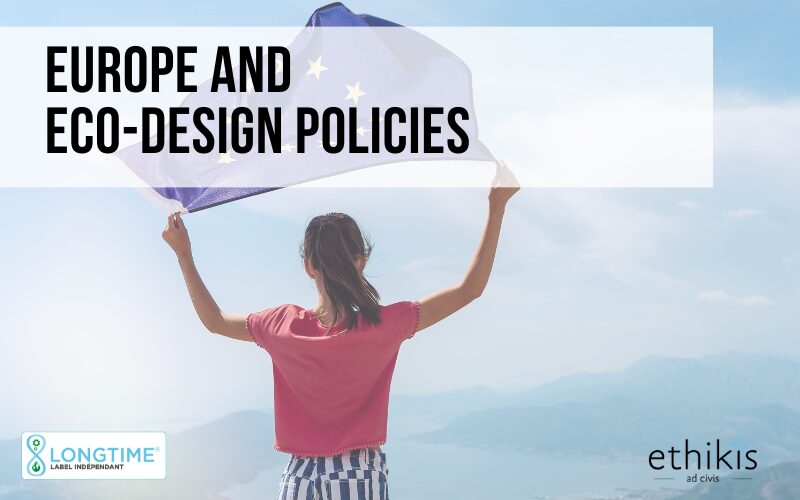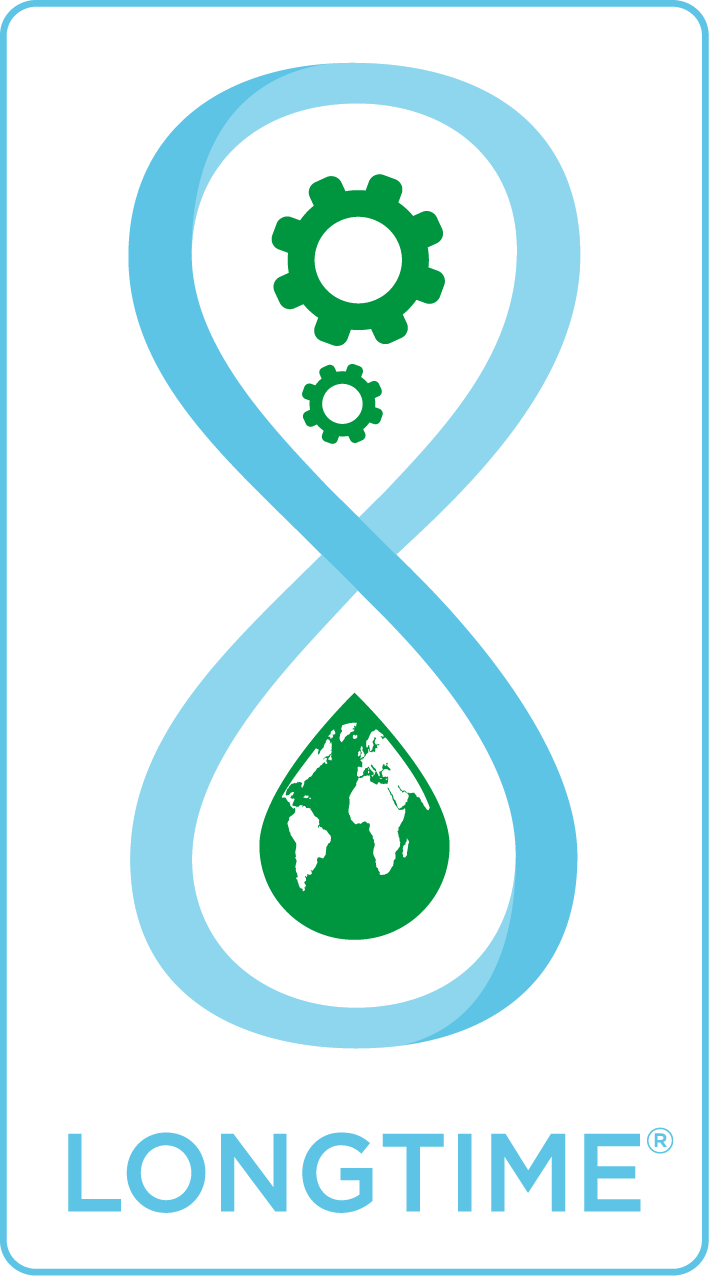Europe recently published the Green New Deal, its new green package for growth. In this plan, which aims to strengthen and anchor the circular economy as a new consumption model, eco-design is given pride of place. But is Europe living up to its ambitions through its various eco-design policies?
In the field of consumer goods and manufactured products, European policies on ecological transition are ambitious and rely essentially on two tools: energy labels and eco-design. We take a closer look at these two regulatory tools.

How does the energy label affect eco-design?
In layman’s terms, theéco-conception revient à réduire l’empreinte environnementale des produits placed on the market. The aim is clear: to effectively reduce the negative externalities of a product at one or more stages in its life cycle.
For example:
- To reduce transport-related pollution, we can relocate production as close as possible to distribution.
- To reduce packaging-related pollution, recycled and/or recyclable materials can be used.
- To reduce overall pollution linked to manufacturing, we can improve the repairability or reliability of products to extend their lifespan.
- To reduce pollution linked to use, we can improve energy consumption
In this last example, the famous energy label has made it possible to reduce the energy consumption of electrical and electronic equipment. The energy label has challenged manufacturers and steered consumers towards more energy-efficient products.
Reducing the energy consumption of washing machines and dishwashers, for example, avoids the emission of large quantities of C02, while reducing the energy bills of European households.
“By 2020, energy labels and ecodesign are estimated to have delivered energy savings corresponding to around 9% of total EU energy consumption and a 7% reduction in carbon emissions.”
How do ecodesign application standards affect the environment?
Europe uses a second tool to encourage eco-design (and therefore the environment): Ecodesign Standards.
In addition to the environmental performance aspect related to energy consumption (discussed above), these eco-design requirements include the following:
- the provision of information to consumers on how to install, use and maintain the product […] and how to ensure optimum life expectancy […] information on the availability of spare parts and product adaptation possibilities;
- the need to avoid technical solutions that are detrimental to the reuse and recycling of components and entire appliances;
- Service life extension indicators: minimum guaranteed service life, minimum lead time for spare parts, modularity, scalability, repairability
Example of a European ecodesign or ecodesign regulation
Here, in detail, is an example with the annex dedicated to washing machines REGULATION (EU) 2019/2023. From March 1, 2021, washing machines comply with the following requirements:
1- Availability of spare parts :
- a) Manufacturers or importers of household washing machines and household washer-dryers, or their agents, shall make available to professional repairers at least the following spare parts, for a period of at least ten years after the last unit of the model concerned has been placed on the market:
- motor and motor brushes transmission between motor and drum;
- pumps;
- shock absorbers and springs;
- washing drum, drum spider and bearings (separately or in sets);
- heat generators and heating elements, including heat pumps, (separately or grouped); piping and related equipment, including all hoses, valves, filters and aquastop systems (separately or grouped);
- printed circuit boards;
- electronic displays;
- pressure switches; thermostats and sensors;
- software and firmware, including reset software;
b) Manufacturers or importers of household washing machines and household washer-dryers, or their agents, shall make available to professional repairers and end-users for a period of at least ten years after the last unit of the model concerned has been placed on the market; at least the following spare parts:
- doors, door hinges and seals, other seals
- door lock assembly
- plastic accessories such as detergent dispensers
c) Manufacturers or importers of household washing machines and household washer-dryers, or their agents, shall ensure that the spare parts referred to in points a) and b) can be replaced using commonly available tools without irreversible damage to the household washing machine or washer-dryer;
d) The list of spare parts referred to in point a) and the procedure for ordering them are publicly available on the manufacturer’s, importer’s or authorised representative’s freely accessible website no later than two years after the first unit of a model or equivalent model is placed on the market and until the end of the period of availability of these spare parts;
2 – Access to repair and maintenance information :
(…)The importer or agent shall provide access to information on the repair and maintenance of household washing machines and household washer-dryers to professional repairers (…)
The manufacturer has the option of requiring certain guarantees from the repairer before providing the following information, in particular to ensure that the repairer is indeed a professional, but the mention of authorized repairer is not an option for whether or not to provide the information.
The following information should be provided by the manufacturer as a matter of course:
The repair and maintenance information for the household washing machine or household washer-dryer mentioned in a) includes:
- unequivocal identification of the household washing machine or washer-dryer;
- a disassembly diagram or exploded view;
- a technical manual with repair instructions;
- a list of repair and test equipment required;
- component and diagnostic information (such as minimum and maximum theoretical values for measurements);
- wiring and connection diagrams;
- error and diagnostic codes (including codes specific to the
manufacturer, if applicable); - instructions for installing relevant software and firmware, including
including reset software; and - information on how to access data relating to incidents involving
reported faults recorded in the household washing machine or household washer-dryer (where applicable);
The same applies to fridges, televisions, air conditioners, dishwashers and many other products. All these measures are laudable and beneficial both for the environment and for extending the life of products.
But… because there’s always a but, is Europe fully committed to this virtuous process, or is it ambivalent?
Are European environmental policies living up to their ambitions?
The technologies embedded in our electrical and electronic equipment are constantly evolving. In order to ensure that the measures put in place by the European Union continue to have a positive impact on the environment, we are committed to the following principles, il est nécessaire de réviser les règlements Écodesign ainsi que les seuils énergétiques de l’étiquette énergie sur des échelles de temps relativement courtes, toutes les quelques années.
But this is also the case for new products. Electric scooters, for example, need to be regulated quickly, so that the tools of eco-design and energy labeling continue to work and be effective.
This research, carried out by product experts at the JRC for example, requires investment on the part of the EU. It is time-consuming and costly, but absolutely essential if the European Commission is to be consistent with the glowing rhetoric it lavishes on eco-design and its benefits.
However, many entities note the delays and inadequate resources allocated to these tools.
In an article published on October 11, 2021, the ECOS network, of which our cooperative Ethikis is a member, sounds the alarm and calls on the European Commission to put its words into action:
“If we consider the updates to the energy and eco-design regulations for products already covered and new products planned for the period 2016-2019, only 25% have been implemented. In other words, two years after the initial deadline, officials still have three quarters of their homework outstanding.
Since the Von Der Leyen Commission took office, not a single product has had its eco-design rules revised, while 13 were already awaiting revision and 10 others were waiting to be newly regulated.
And that’s not all: the Commission is currently drawing up a new work plan for the period 2020-2024 – as of autumn 2021, this plan is still not ready.”
This is indeed problematic, because every delay means we lose an opportunity to regulate and encourage the market a little more for an indispensable and successful ecological transition.
The proof is in the pudding: experts in the field of refrigerants have identified a direct link between Europe’s backlog and the generation of 10 million tonnes (CO2eq) of additional emissions by 2030, equivalent to the emissions from 5 million cars in one year.
Last but not least, the experts at Coolproducts calculate that eco-design and energy labeling policies alone could achieve 30% of the EU’s 2030 emissions reduction targets.
In other words, out of the 1500 million tonnes of C02 emissions to be saved, the energy label + eco-design measures alone could save 500 million tonnes. So why don’t we give this subject the attention it deserves?
Bien qu’assez méconnus du grand public, les mesures en faveur de l’éco conception et l’étiquetage énergétique sont de réelles réussites pour l’UE. Elles ont réussi à faire un pont pragmatique entre enjeux écologiques à long terme et enjeux économiques quotidien des citoyens.
Considered by the European Commission itself as a lever with very high environmental potential, it is now necessary for the Commission to abandon this form of schizophrenia and allocate sufficient funding and manpower in relation to its own ambitions, so that the elephant doesn’t give birth to a mouse.

